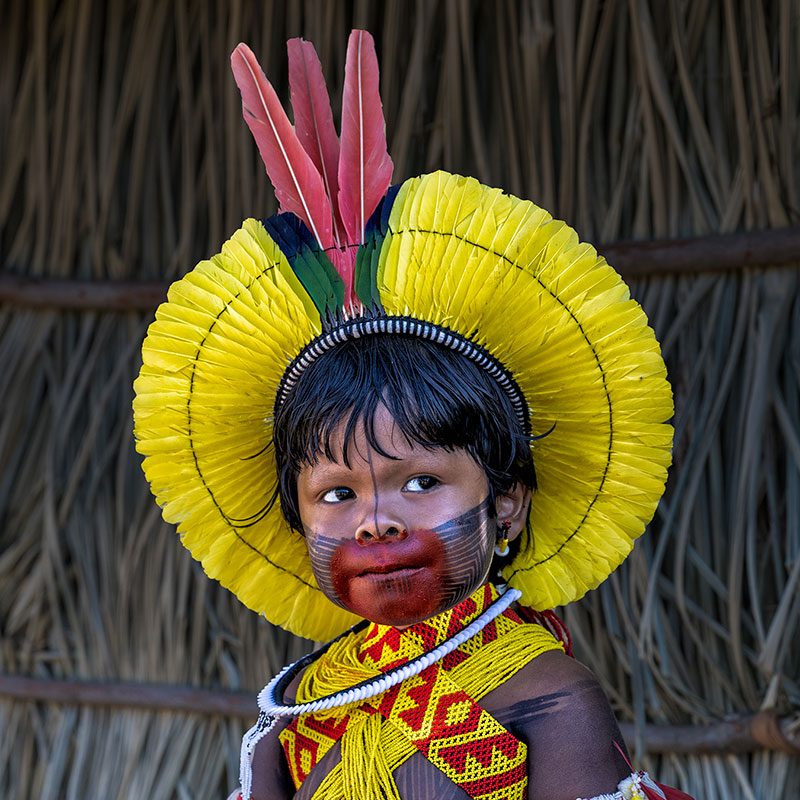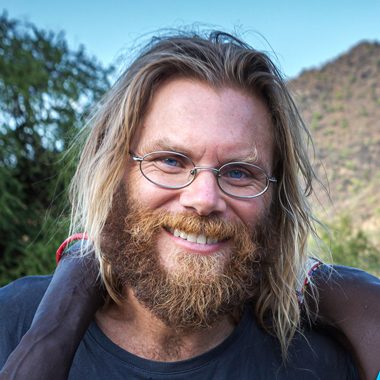The name Kayapo emerged in the early 19th century, given by neighboring groups, and means “those who resemble monkeys,” although they call themselves Mebêngôkré, “the people of the place of water.”

Kayapo population and ecosystem
The Kayapo people live in villages scattered across the upper basin of several tributaries of the Xingu River in central Brazil. Their territory, almost the size of Austria, is dominated by equatorial rainforest, except for some savanna areas in the east. They possess a highly complex cosmology, ritual life, and social organization, along with an intense and ambivalent relationship with Brazilian society.
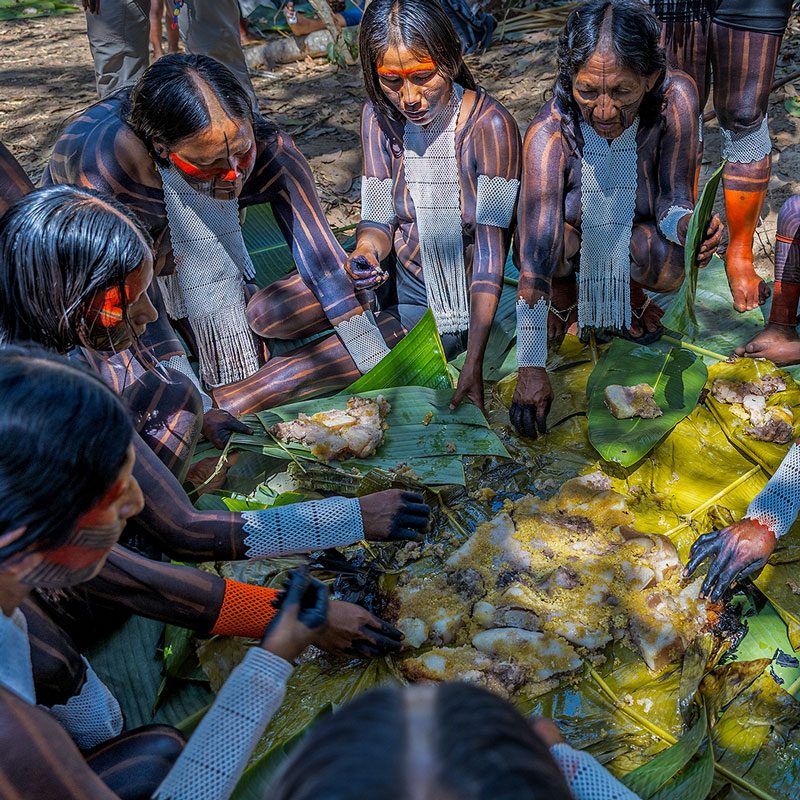
Economy and social organization
The Kayapo tribe practice subsistence agriculture—mainly cassava, corn, and native fruits—and are skilled gatherers. Hunting and fishing complement their diet, using bows, arrows, spears, or traditional techniques such as plant-based poisons.
The Kayapo show great respect toward women, who are responsible for gathering, agriculture, and child-rearing, while men hunt and protect the village. Society is organized into clans, and each person assumes roles according to age and gender. Collective decisions are made in the malocas, where elders serve as advisors.

The Kayapo ceremonies mark the cycles of life. Notable ones include the “Jaguar Ritual,” in which young men test their abilities as warriors, and the “Tattooed Man Festival,” which celebrates the transition to adulthood through symbolic body painting.

Do you want to meet the Kayapo people?
Join us on our upcoming trip to Brazil, where we'll be living with the Kayapo people. Discover all the details of the trip.

Art and architecture
Masks used in various rituals are of great importance in Kayapo art. The masquerades known as the "monkey men" refer to a ritual where Kayapo men wear monkey masks during short dances. In addition to monkey masks, the Kayapo people use other types of masks, such as Karõ masks, which are made for specific characters in certain celebrations, like the Kôkô naming ritual. One example is the Tamanduá-Bandeira mask (pàt karõ), which symbolizes the close relationship between husband and wife.
Kayapo architecture is organized around a large circular plaza that structures the entire village and symbolizes the social life of the group. At the centre is the men's house, a ritual and political space, while family dwellings are distributed around it, traditionally built using indigenous techniques such as plant structures and thatched roofs. Although today there is a clear blend of traditional and external materials and methods, the Kayapo reinterpret each innovation according to their own cultural system—the kukradjá—while maintaining the essence of their spatial organization.
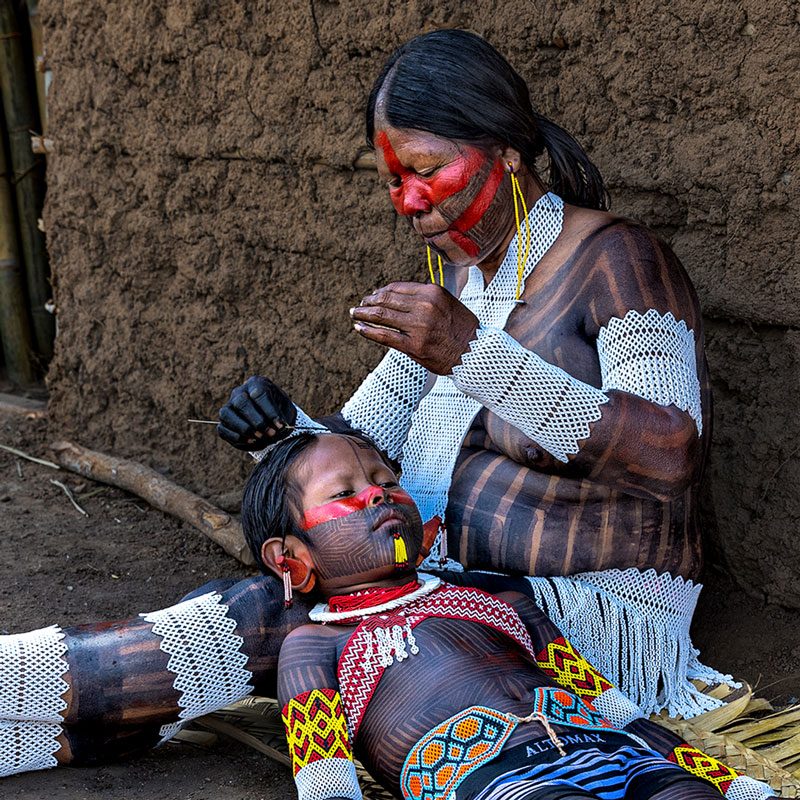
Aesthetics and belief system
La pintura corporal es una marca distintiva. Hombres y mujeres decoran sus cuerpos con tintes naturales como el urucú (rojo) y el genipapo (negro), ligados a la protección espiritual y a su conexión con la naturaleza. En el mito de la Mujer Estrella, la pintura permite la transformación de estrella a ser humano.
Pintar es una tarea principalmente femenina. Tras el baño vespertino, todos se aplican genipapo y luego achiote para dar brillo y fragancia. También afeitan el cabello al estilo kayapó y lo ungen con aceite de babasú.
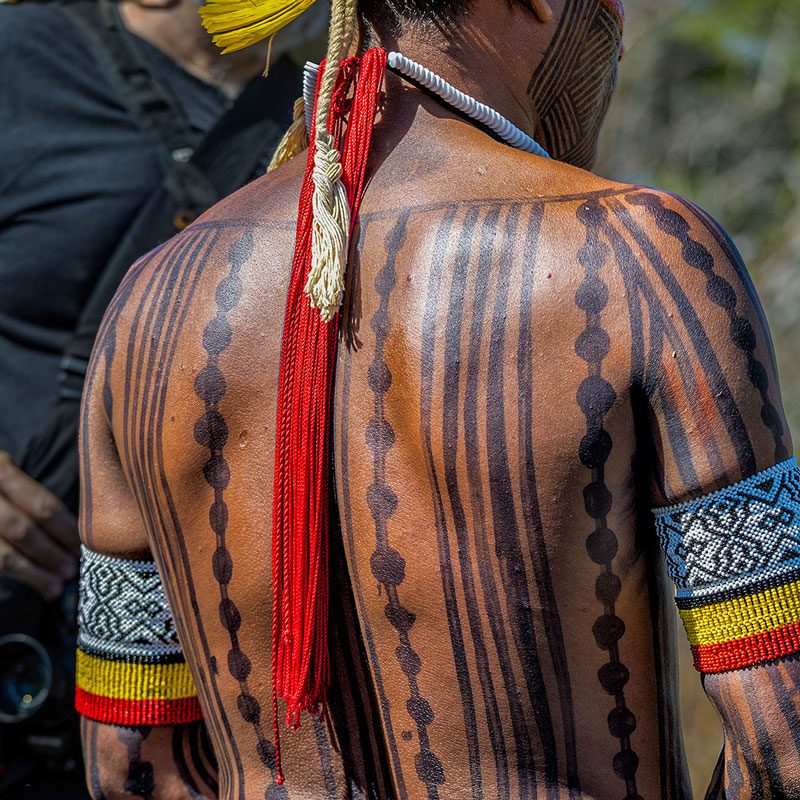
The Kayapo language belongs to the Gê family and, despite contact with Portuguese, remains central to their identity. Oral tradition plays a key role, transmitting their myths and knowledge.
The Kayapo worldview is closely tied to nature. Prominent myths include that of the “Sun and the Moon,” which explains the origin of the world. The jaguar, a symbol of strength and power, is widely revered.

Challenges of the Kayapo people
The Kayapo collaborate with NGOs and environmental organizations to defend their territory. Under leaders such as Raoni Metuktire, they have promoted international campaigns. In 1989, they succeeded in stopping the construction of a large dam on the Xingu River that would have flooded their lands.

The author of these images, Ana Robles, is a veterinarian, social psychologist, and photographer, and it is in photography that she has found her true passion. Her work with Brazilian indigenous communities—including the Kayapó, Karajá, Mehinaku, and Waurá—combines aesthetic sensitivity with deep cultural respect, revealing ways of life that few people have the opportunity to experience up close.

"From a young age, I was interested in learning about people from different parts of the world. I would talk with my grandfather, a wise man of the land, about other worldviews, and when I could, already grown and with two children, I ventured out into the world. I was fascinated; travel was a source of knowledge. Photography was a way to bring back a memory of each place I visited, and a way to show everyone that other realities existed.

I learned where, how, and when to take photographs. I had no problem approaching people, speaking to them in my language, and receiving responses with perfect understanding; it was and is wonderful.
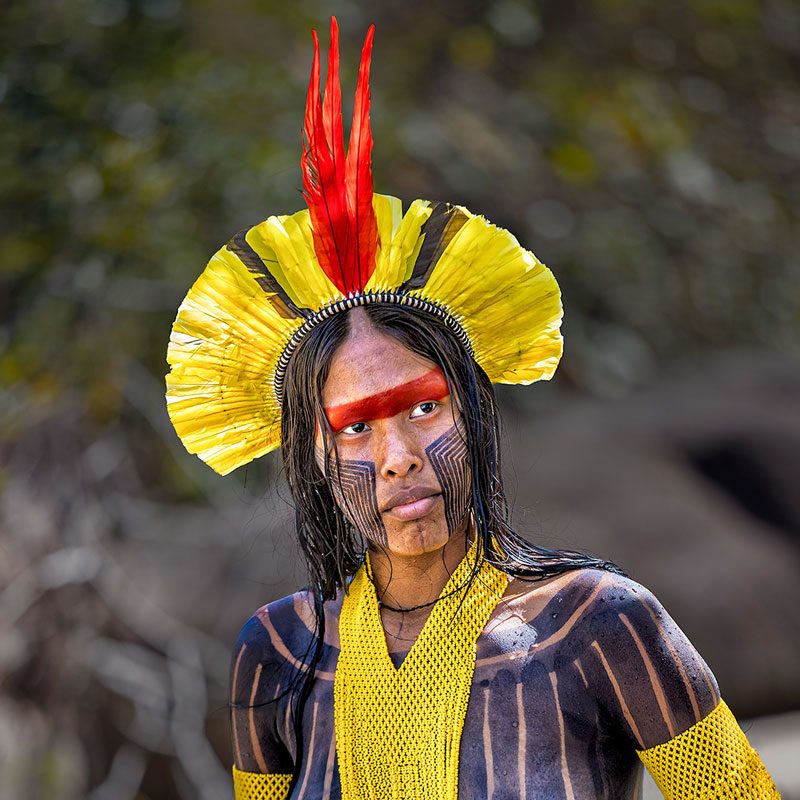
My last experience was in Brazil. The Amazon is the great Mother Earth of the world, and many people live there. Now I know that there are many tribes that have not yet been contacted, but also that the rainforest protects many other peoples who face significant threats due to deforestation and the expansion of thousands of cultivated hectares or used for cattle breeding, among other activities.
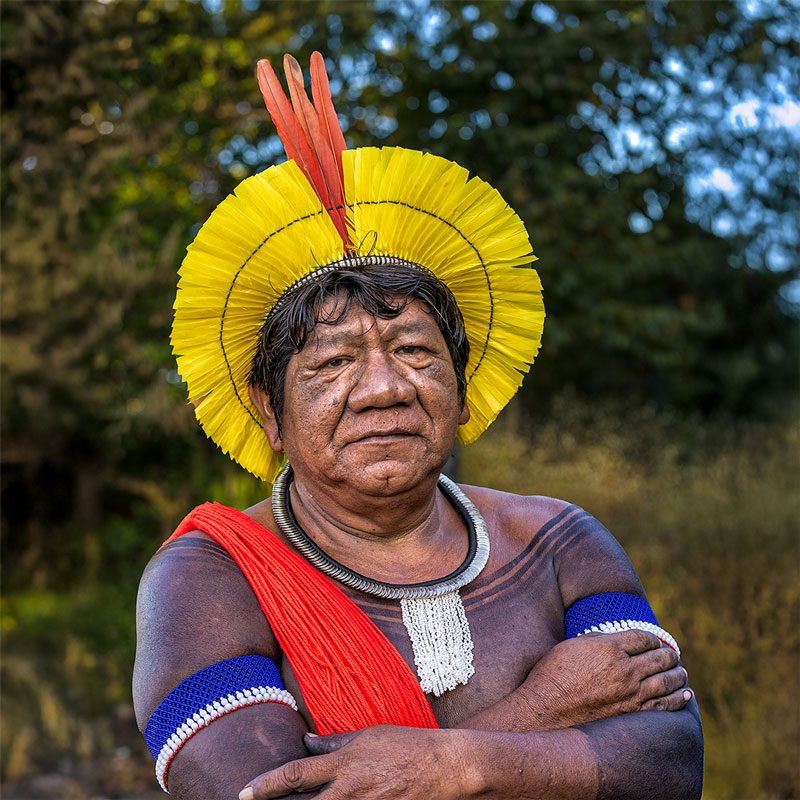
With Last Places, I visited some communities in the indigenous territory of the Xingu River, and I was able to witness ceremonies, Singing, and dancing. I also had the honour of receiving a name—a very important act for them and, of course, for me as well. My photographs try to tell a small part of these valuable cultures, which still persist. It has been a great experience.
